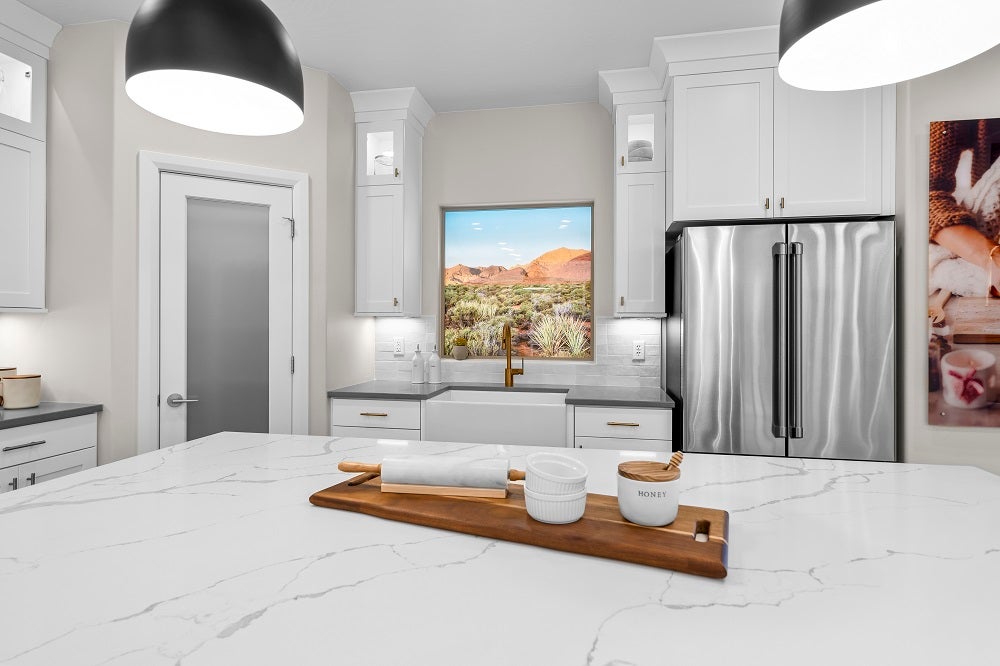

August 31, 2021
Are you thinking of replacing your kitchen countertops? Now is a better time than ever to give your kitchen a facelift or search for a home that has the kitchen of your dreams. With so many options for your kitchen countertop, choosing the right one can feel a little overwhelming. We have an award winning staff of interior designers in our Visionary Homes Design Studio and have learned a thing or two about countertops that we’re happy to share with you. Picking the perfect kitchen countertop depends on your priorities – we’ll explain the key characteristics of each type to help you make the right choice.
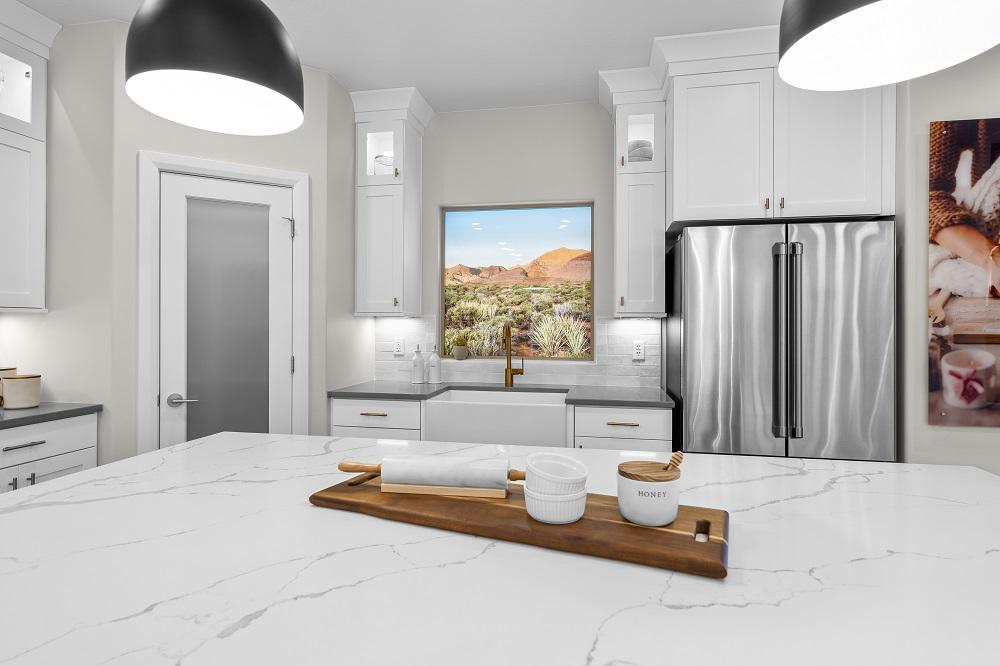
The days when your only choices were plastic laminate or wood butcher block are long gone. Today, there are dozens of surfaces available, ranging from natural-stone and renewable acrylic sheets, to quartz composites and tinted concrete. There are seven popular countertop materials:
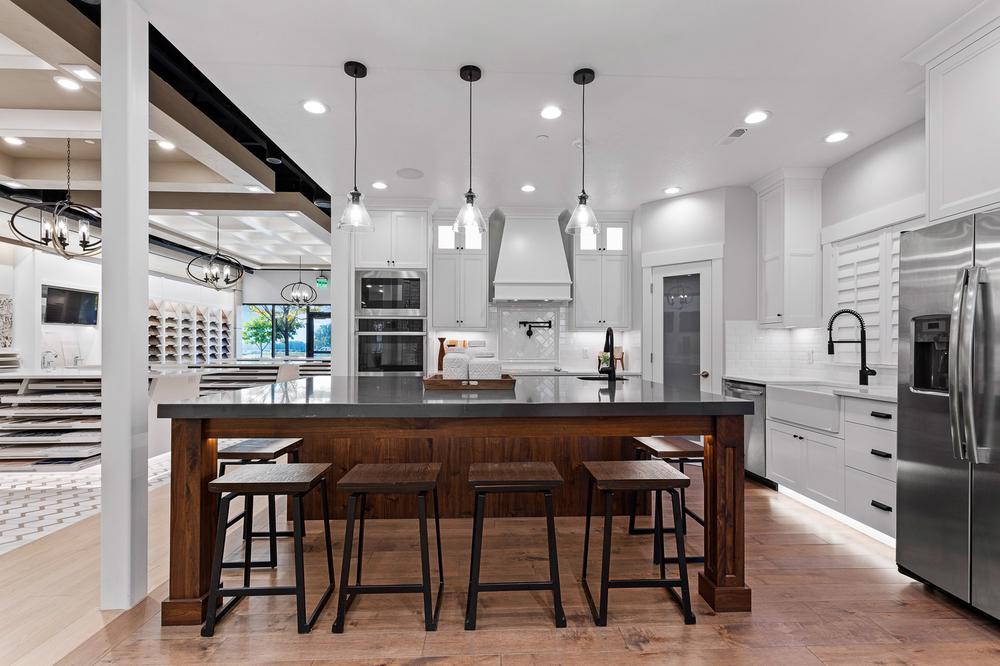
Along with a variety of materials, countertops come in dozens of colors, patterns, and textures to satisfy any design goal. There’s no one countertop that’s ideal for every home, so the best material for your kitchen will depend on a couple of factors; color, overall appearance, durability, stain- and scratch-resistance, and of course, price. The most common items used to make countertops include:
Granite
Engineered Stone (Quartz)
Soapstone &Slate
Laminate
Concrete
Wood
Let's take a look at the difference in each of these materials, what they are best suited for, and if they can stand the test of time in your kitchen.
What was once found only in expensive, high-end kitchens, granite is much more common today and is by far the most popular natural-stone countertop material. Granite counters are sold primarily through local fabricators, but they’re also commonly available at many home-improvement stores and kitchen showrooms. Available in a wide array of colors, ranging from variegated browns to midnight black, deep red, and mottled white. It’s cut into long, thick slabs that require few, if any, seams. After the granite is cut and polished, it’s treated with a sealer that makes the countertop stain resistant. This treatment usually lasts five to ten years, but be sure to use a stone cleaner instead of abrasive for everyday cleaning. Most granite counters are polished to a glossy sheen but that is not your only choice in finishing. You can also ask for a “honed finish”, which is much less shiny and more of a matte sheen or “leathered granite” which has a slightly textured surface that lends a rustic, casual look to a kitchen.
Another type of solid surfacing material that’s worth considering is called quartz composite. The countertop material known as "quartz" is actually an engineered stone product that contains as much as 93 percent quartz particles and other minerals, shaped into slabs and bound with resins. Corian Quartz, Formica Solid-Surfacing, and Silestone, are a few of the quartz composites now available. The main differences between engineered stone and traditional solid-surfacing materials are that engineered stone is much harder and has a depth, clarity and radiance not found in solid surfaces.
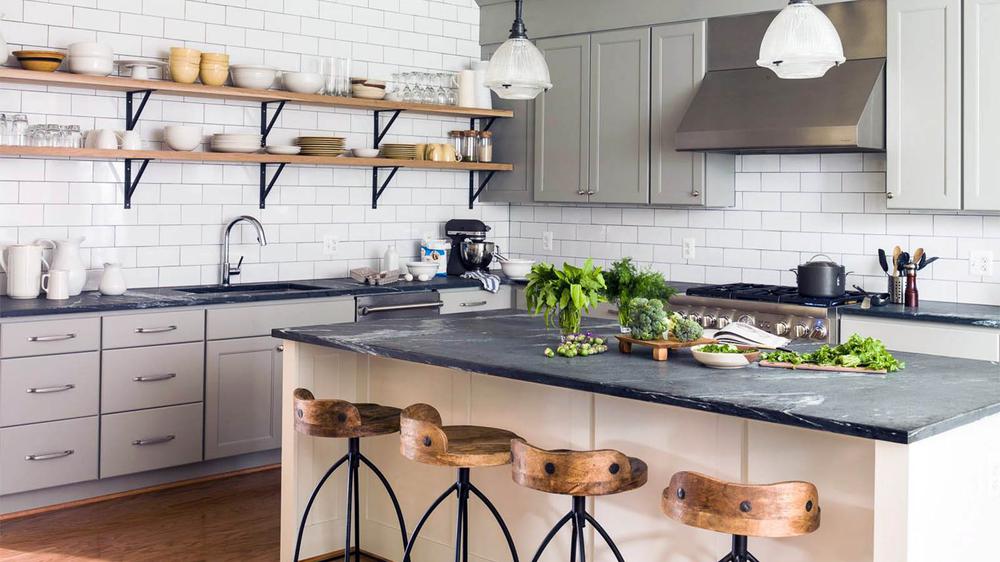
Soapstone and Slate come in far fewer colors than other countertop materials. Soapstone is usually dark greenish-black, although lighter green-gray slabs are also common. Slate is an extremely dense stone that comes in five subtle colors: green, red, gray, purple and black. Slightly less common are variegated purple and mottled purple slates, which have visible veins and shades of contrasting colors. Both soapstone and slate can be fabricated into sinks to match the countertop. Soapstone is porous and must be sealed with mineral oil to reduce staining. Slate, on the other hand, is nonporous and virtually maintenance-free. While slate is relatively soft, minor scratches can be buffed out with steel wool. Slate has a soft-matte sheen, but you can create a “wet” look by rubbing the surface with lemon oil.
Often referred to by its trade name, Formica, this is a surprisingly durable material that can survive many years in the toughest kitchens. The laminates are plastic-coated synthetics with a smooth surface that's easy to clean. Although for many years regarded as more ordinary than premium countertop materials, laminates have seen a recent surge in popularity, thanks in part to the thousands of colors, patterns, and styles now available. However, only those with a matte or fine-matte finish should be used for countertops. Never use a textured laminate for a kitchen counter; its raised ridges will start to show wear rather quickly. Note that there are two types of laminates: 1/16-inch-thick general-purpose, and 1/32-inch vertical grade. Only general-purpose laminate is suitable for countertops; vertical grade is for backsplashes, and cabinet doors and drawer faces. Plastic laminate comes in sheets ranging from 2x4 foot to 4x8 foot Longer and wider sheets can be specially ordered.
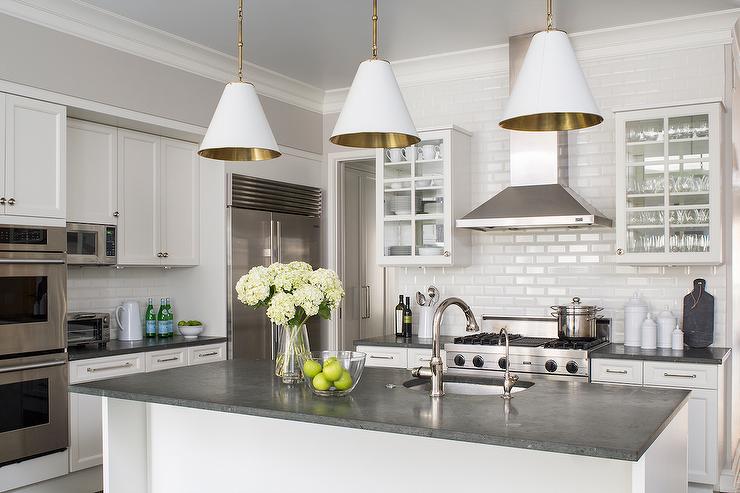
Concrete counters, which closely resemble natural stone, continue to be popular for people looking to achieve a truly custom countertop. Due to their heavy weight, concrete countertops are usually cast in forms right in your kitchen. These are not the same kind of concrete slabs used in sidewalks, but highly polished concrete slabs. Precast concrete counters are typically 1½ inch thick, and available in slabs up to 10 foot long. A variety of colors are achieved by adding pigments to the concrete during mixing. Once cured, the slabs are honed and sealed to prevent staining. Cracking is always a concern with concrete, and fabricators often use wire mesh, metal rebar, or fiberglass or stainless steel fibers to strengthen the counter.
Wood countertops are a great choice for a work surface. Wood counters are typically made from maple, an extremely dense, blond hardwood, but teak, walnut, cherry, birch and oak are also used. There are three ways that wood countertops are fabricated: edge grain, end grain, and wide plank. Edge-grain counters are made up of long, thick strips of wood that are glued together with the edge grain facing up. End-grain counters (butcher blocks) are constructed of relatively short, square sticks of wood that are joined together with the tough end grain facing up. Wide-plank counters are made by edge-gluing together wide boards. This is a beautiful and traditional style of wood counter, but it’s also the type that’s most susceptible to cracking and warping, if it’s not meticulously maintained.
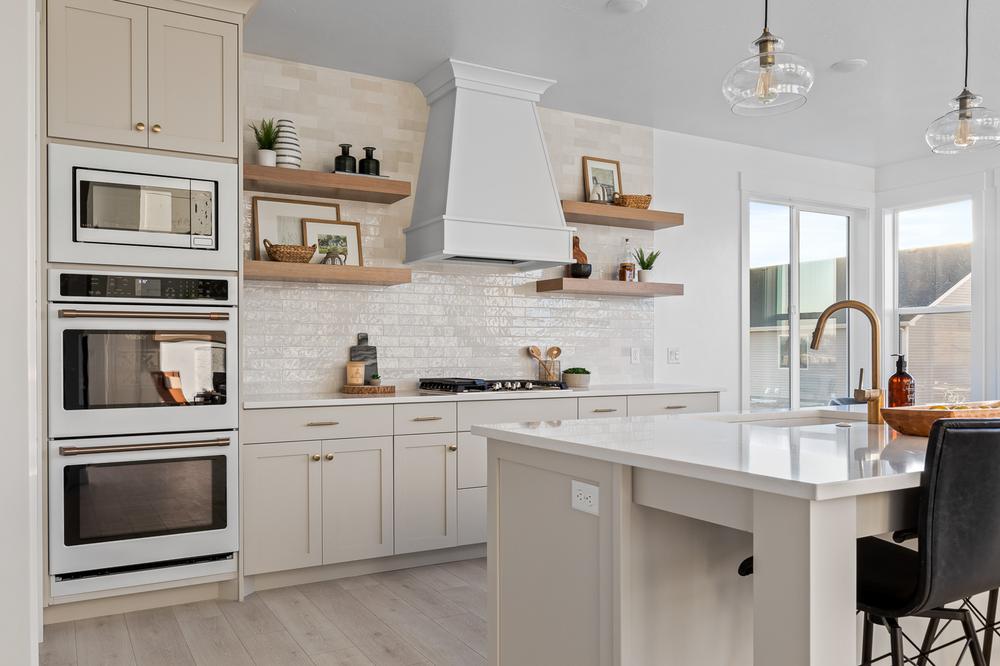
Do you have more questions about your future kitchen countertops or planning a kitchen renovation project? Stop by one of our model homes for inspiration or schedule a personal design consultation with one of our professional designers at a Visionary Design Studio. If you are interested in upgrading your kitchen by moving into a new home we are here to help! Feel free to call us at 435-228-4702 or fill out the form below for a consultation.
The post How to Pick the Perfect Kitchen Countertops appeared first on Visionary Homes.